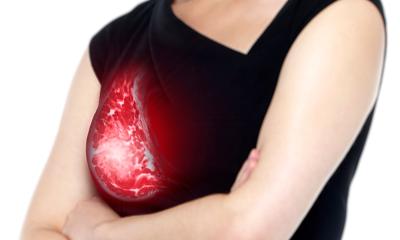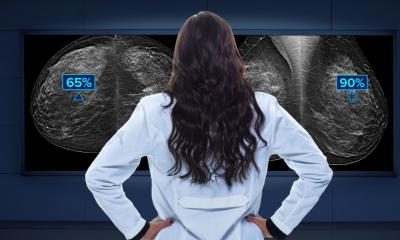The German Society for Senology 28th Annual Conference
30 December - 1 November
In a pre-conference discussion with this year's President, Professor Hans-Heinrich Kreipe, Director of the Institute for Pathology at Hanover Medical School, he outlined the significance of MRI in breast cancer detection, and highlighted other topics for the event.

‘For certain breast cancers – especially the aggressive ones that cannot be detected with X-rays – MRI examination is definitely better. For these, which occur particularly in younger women, it would make sense to define a risk group for hereditary breast cancer, who would benefit from MRI examinations for early diagnosis – particularly patients with radio-opaque breasts,’ he added. ‘However, an MRI scan often shows up things that may turn out to
be harmless – but intervention has already taken place.’
After diagnosis, the vital question is: What type of mamma carcinoma is it; passive or aggressive? This cannot accurately be distinguished by traditional measuring instruments, he pointed out. Given the trend towards individualised therapy, the extent to which molecular biology may contribute to this problem will be discussed, and gene profiling research presented.
In 2003, the German Society for Senology and the German Cancer Society e.V. began issuing the quality mark Certified Breast Centre to hospitals that ensure professional care. Asked about this, Prof Kreipe said the project has been running very successfully. ‘However, it’s a shame that certified breast centres and screening-institutions, are only superficially networked together, but run alongside one another. The German screening programmes can only be carried out in certain institutions, so this excludes all other hospitals. This is also problematic in terms of further training, because this diagnostic outsourcing means trainee doctors hardly see any mammograms – something criticised, particularly by the German Radiology Society.’
Radiologist Professor Ingrid Schreer heads the Breast Centre at the University’s Women’s Hospital in Kiel and is Vice Chair of the German Society for Senology. Asked for her views on the best imaging procedures for the early diagnosis of breast cancer, she unhesitatingly replied: ‘Ultrasound scanning is definitely the ideal, complementary examination procedure to mammography. Initial results from a multi-centre elastography study are particularly promising. They show that by measuring tissue elasticity with ultrasound elastography we can better tell benign tumours and unclear tumours apart, with a very high probability. For example, a harmless increase in tissue volume can be cysts, which frequently occur in the breast and can be clearly identified via elastography without the need to penetrate it. So this imaging procedure promises a much gentler way of diagnosis. However, it doesn’t help in the further differentiation of malignant tumours in BI-RADS categories four to five.
‘The most helpful method to identify suspected malignant results remains biopsy. We have very gentle hollow needle procedures for this, using the ultrasound-guided punch biopsy and vacuum biopsy under ultrasound, X-ray or MRI control. MRI scanning only makes sense for high-risk groups – women already offered an annual MRI scan as standard in one of 12 centres set up for this purpose here,’ she added.
‘The problem with early detection via mammography is not necessarily that malignant tumours are overlooked but that highly aggressive types grow very fast. Therefore, a mammography screening programme carried out every two years is not effective enough for those tumours and for younger women. For them, in Sweden, screening programmes are carried out every 1.5 years. A large English study has shown that annual mammography screening for 40–50-year-old would make even more sense. If necessary, shorter intervals between examinations should be possible on an individual basis, to ensure early diagnosis.’
As for digital tomosynthesis versus 2-D mammography, Prof Schreer pointed out that the former shows small sections of glandular tissue without overlay, so unlike a classic X-ray exam, the result is not masked by upper layers of tissue. The uses for digital tomosynthesis are the subject of current studies. ‘It is important that patients are not exposed to additional radiation through this procedure, so tomosynthesis can only be used complementary to classic mammography. However, we don’t know whether this will work. Digital mammography could potentially be combined in one single piece of equipment with ultrasound, but that’s speculation.’
As for using molecular imaging to differentiate and individualise tumours, this may one day become a complementary procedure ‘…to discover more about benign or malignant tumour functions, beyond anatomic-morphological information,’ she added. However, this is currently only used in animal experiments, and no one can be sure.
28.10.2008











